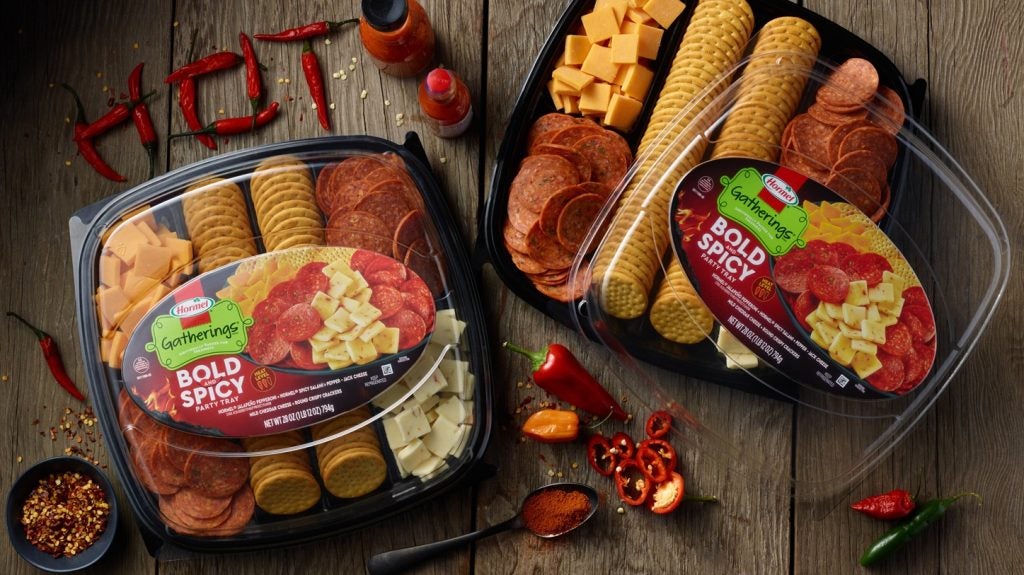
The indulgence of heat may sound like a Gabriel Garcia Marquez novel but it is rather the idea that spice lovers are concerned about the heat/flavour profile of a product above all else.
While better-for-you versions of products have become de rigueur across multiple categories, from baked goods and snacks to canned lines, dairy items and confectionery, healthier options have yet to make a major impact on products in which heat/spice is what is most desired by consumers.
But could that situation change?
The consumer trends
There are lots of reasons why products offering heat have grown in popularity in North America and Europe.
The most obvious might be that as consumers’ curiosity has piqued and tastes developed from foreign travel or an increasingly wide range of restaurant offerings, supermarkets have strived to broaden their appeal to shoppers by offering a product range based on global cuisines.
This has often meant moving into cuisines that traditionally use heat and spice in dishes, such as Indian, Thai, Korean and Mexican.
The second reason is a generational shift. Younger consumers are leading the way when it comes to heat/flavour choices.
A January 2025 industry insight report into the foodservice channel from research and analysis organisation GlobalData – Just Food’s parent company – said: “Condiments and seasonings are a quick and easy way for foodservice operators to respond to new cuisine trends. The top five responses for most preferred cuisine by generation show that while more globalised cuisines such as Italian are popular across the board, there is growing interest among younger generations for alternatives such as Korean.”
The third reason for growth, and this is somewhat chicken and egg, is that food manufacturers have picked up on this trend, have developed it in their products and, crucially, helped it to spread beyond its traditional sauces, spices and ethnic food categories.
Ana Sanchez, the president of McCormick & Co.’s operations in Europe, the Middle East and Africa, is on record as saying: “It’s pretty incredible that in the US, Gen Z and millennials use more hot sauce than ketchup, and they use more hot sauce than any other generation.”
Category spread
Like better-for you, heat is also jumping across categories.
Recent examples include confectionery and snacks giant Mondelez International adding a hot honey variant to its Ritz crackers range, citing the “increasingly popular swicy (sweet + spicy) snack offerings” as guiding its thinking.
Similarly, US almond products business Blue Diamond has linked up with local hot honey brand Mike’s Hot Honey to create Blue Diamond Mike’s Hot Honey Almonds.
Hot honey is arguably the biggest thing in heat-based products at the moment – in the way Thai sauce Sriracha was a year or two ago. It was ubiquitous at the influential Expo West trade show in California earlier this month.
Hormel Foods, behind brands such as Spam and Skippy peanut butter, is another US food major to turn up the heat.
On the back of its Fontanini hot honey sliced sausage, its new Hormel Gatherings Bold and Spicy Tray features jalapeño pepperoni and spicy salami, described as “a fiery, flavour-packed twist on classic favourites that are sure to satisfy spice lovers and snack enthusiasts alike”.
Asked about the market opportunity Hormel has recognised with this product launch, brand manager Rhonda Ihrke tells Just Food: “Consumer demand for bold and spicy flavours continues to grow, especially among younger demographics.”
Quoting the FMCG Gurus 2023 Flavor, Color, Texture Global Trends report, Ihrke says: “In fact, 82% of consumers are drawn to foods and beverages with hot and spicy flavours. We’re continuously exploring ways to bring exciting heat-driven innovations to our portfolio, ensuring we meet evolving taste preferences with flavourful, high-quality options.”
On the issue of category spread, she says Hormel sees “significant potential for heat and spice to influence multiple categories, particularly breakfast and heat-and-eat refrigerated meals” and adds: “Consumers are looking for bold flavours in every eating occasion and the growing demand for spicy options presents opportunities to innovate in these spaces.”

Social media influence
Rhea Agarwal, director of business development in the UK and the EU at Haldiram’s Overseas, a UK-based subsidiary of the India-based FMCG major, has also seen a surge in interest in spicy food, to such an extent that it has just expanded its production capabilities to meet growing demand in the UK.
“Platforms like Instagram and TikTok have introduced audiences to the colourful, bold dishes of cultures such as Korean, Mexican, and Indian, sparking curiosity and a willingness to explore spice in new contexts,” she says.
“The quest for novel, exciting culinary experiences is fuelling the demand for heat-infused products.”
And Agarwal, too, is alive to the potential for category spread.
“From spicy baked goods like jalapeño cornbread to ready meals with a fiery kick, and even snacks like chili-infused chips, the possibilities are endless. This creative experimentation allows companies to cater to evolving consumer preferences while differentiating themselves in a crowded marketplace,” she says.
Analysts and market watchers have also latched on to the growth of heat and spice and the cross-fertilisation opportunities between manufactured products and the foodservice channel and between various categories.
Hannah Cleland, a food and foodservice analyst at GlobalData, says: “Condiments are a major value-add in particularly foodservice at the moment. Collaborations between restaurant menus and condiment brands for a limited time have a track record of boosting sales which is vital in the current climate.
“Influencer videos and social media shows such as Hot Ones will also help continue to fuel demand and promote collaborations in future, as younger cohorts are always looking for new food and flavour combinations which these crossovers can help facilitate. Our research shows 53% of Millennials and 52% of Gen Z agree they use social media to discover products in new flavours, putting them way ahead of older generations.”
The blending of hot sauces with other categories will likely accelerate
Dan Gomez, Browns Gibbons Lang & Company
Dan Gomez, head of food & beverage at US investment bank and financial advisory firm Brown Gibbons Lang & Company (BGL), is on the same page as Cleland. “The blending of hot sauces with other categories will likely accelerate,” he says. “The crossover between hot sauces and other categories isn’t just a passing trend; it’s a reflection of evolving consumer tastes.
“F&B companies competing in both the retail and foodservice channels are finding ways to collaborate with each other across categories. We also see in this happening a lot in ready-to-eat, home-meal delivery. Brands are showcasing their sauces/spices to individual home meal recipes. How big of an impact this becomes is hard to gauge at this point. It seems to be most prevalent in retail, with tailwinds in the foodservice and ready-to- eat/online channels.”
Is better-for-you on the horizon?
But different trends can sometimes act against each other and there is a suspicion that a category that has so far fed into consumers’ indulgent desires based on a heat/taste mix, may come under pressure amid shoppers’ interest in better-for you products.
There could be winners and losers if this becomes reality. Sriracha hot sauces typically have a near 20% sugar content while hot honey is not far behind.
By contrast, McCormick & Co’s Cholula hot sauce has only 0.6g of sugar per 100g but – showing better-for-you credentials are not as yet a priority in this area – the product’s labelling does not draw attention to what might be seen as a key selling point.
Ihrke at Hormel hints that things might change because of younger consumers’ preferences. “Spice lovers, especially younger consumers, still care about clean labels and simple ingredients. A bold flavour profile doesn’t mean less concern for quality and thoughtful choices,” she says.
There is growing awareness of the hidden calories consumers are adding to their meals with condiments
Hannah Cleland, GlobalData
Cleland at GlobalData does not see much evidence of this development yet, though.
“As the primary purchase driver is sensory enjoyment, there is not much move in the hot sauce market to develop low/no and clean label claims. But there is a growing awareness of the hidden calories consumers are adding to their meals with condiments,” she says.
“Given the current climate around US food politics and the ongoing ultra-processed foods discussion, condiments much like other categories are likely to start receiving more scrutiny for their additives.
“Our 2024 Q1 survey of key markets reveals 46% of consumers are extremely/quite concerned about the amount of ultra-processed seasonings, dressings and sauces they eat.”
But she argues: “While there is a reasonable amount of awareness around the health impacts of condiments, we are unlikely to see the widespread attempts at reformulation we have seen in categories such as snacks and carbonated drinks any time soon.
“That said, a clean label, non-HFSS condiment launch would appeal to more risk-averse consumers that spend longer scrutinising packaging than average consumers. Flavour impact will still come first so any better-for-you formulation with legs will need to guarantee high sensory enjoyment.”
Investor influence
M&A activity could have an impact here. BGL released a report from its food and beverage investment banking team earlier this month that showed sauce and condiment firms are proving attractive to consumers and, by extension, attracting “strong interest from investors”.
But the report also said better-for-you offerings and functional ingredient additions continue to attract health-conscious consumers.
BGL’s Gomez says: “Currently, indulgence and/or flavour uniqueness, particularly ethnic-inspired, seems to be driving consumption trends more than anything. However, as with other F&B CPG categories, innovation around better-for-you and functionality will likely become more prevalent.
“As these unique/indulgent flavours become more mainstream, consumers will demand more of them, particularly as it relates to health, which is undeniably influencing the broader industry as a whole.”



